Mecp2 regulates tnfa during zebrafish embryonic development and acute inflammation
- PMID: 28993314
- PMCID: PMC5769600
- DOI: 10.1242/dmm.026922
Mecp2 regulates tnfa during zebrafish embryonic development and acute inflammation
Abstract
Mutations in MECP2 cause Rett syndrome, a severe neurological disorder with autism-like features. Duplication of MECP2 also causes severe neuropathology. Both diseases display immunological abnormalities that suggest a role for MECP2 in controlling immune and inflammatory responses. Here, we used mecp2-null zebrafish to study the potential function of Mecp2 as an immunological regulator. Mecp2 deficiency resulted in an increase in neutrophil infiltration and upregulated expression of the pro- and anti-inflammatory cytokines Il1b and Il10 as a secondary response to disturbances in tissue homeostasis. By contrast, expression of the proinflammatory cytokine tumor necrosis factor alpha (Tnfa) was consistently downregulated in mecp2-null animals during development, representing the earliest developmental phenotype described for MECP2 deficiency to date. Expression of tnfa was unresponsive to inflammatory stimulation, and was partially restored by re-expression of functional mecp2 Thus, Mecp2 is required for tnfa expression during zebrafish development and inflammation. Finally, RNA sequencing of mecp2-null embryos revealed dysregulated processes predictive for Rett syndrome phenotypes.
Keywords: Inflammation; Rett syndrome; Zebrafish; mecp2; tnfa.
© 2017. Published by The Company of Biologists Ltd.
Conflict of interest statement
Competing interestsThe authors declare no competing or financial interests.
Figures
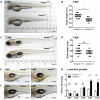
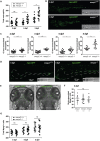
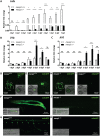

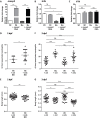

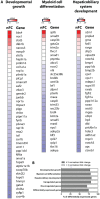
Similar articles
-
Proteomic analysis of the Rett syndrome experimental model mecp2Q63X mutant zebrafish.J Proteomics. 2017 Feb 10;154:128-133. doi: 10.1016/j.jprot.2016.12.010. Epub 2017 Jan 3. J Proteomics. 2017. PMID: 28062374
-
Methyl-CpG Binding Protein 2 Regulates Microglia and Macrophage Gene Expression in Response to Inflammatory Stimuli.Immunity. 2015 Apr 21;42(4):679-91. doi: 10.1016/j.immuni.2015.03.013. Immunity. 2015. PMID: 25902482 Free PMC article.
-
Zebrafish Mecp2 is required for proper axonal elongation of motor neurons and synapse formation.Dev Neurobiol. 2017 Sep;77(9):1101-1113. doi: 10.1002/dneu.22498. Epub 2017 Apr 24. Dev Neurobiol. 2017. PMID: 28371371
-
Can we relate MeCP2 deficiency to the structural and chemical abnormalities in the Rett brain?Brain Dev. 2005 Nov;27 Suppl 1:S72-S76. doi: 10.1016/j.braindev.2004.10.009. Epub 2005 Sep 22. Brain Dev. 2005. PMID: 16182497 Review.
-
MeCP2 dysfunction in Rett syndrome and related disorders.Curr Opin Genet Dev. 2006 Jun;16(3):276-81. doi: 10.1016/j.gde.2006.04.009. Epub 2006 May 2. Curr Opin Genet Dev. 2006. PMID: 16647848 Review.
Cited by
-
Fish TNF and TNF receptors.Sci China Life Sci. 2021 Feb;64(2):196-220. doi: 10.1007/s11427-020-1712-4. Epub 2020 Jul 24. Sci China Life Sci. 2021. PMID: 32720033 Review.
-
Intestinal Candida parapsilosis isolates from Rett syndrome subjects bear potential virulent traits and capacity to persist within the host.BMC Gastroenterol. 2018 May 2;18(1):57. doi: 10.1186/s12876-018-0785-z. BMC Gastroenterol. 2018. PMID: 29720131 Free PMC article.
-
Zebrafish mecp2 null-mutation increases anxiety and cortisol levels but no change in adult social preference and larval chemically-induced hyperlocomotion.BMC Neurosci. 2025 Jul 1;26(1):38. doi: 10.1186/s12868-025-00946-8. BMC Neurosci. 2025. PMID: 40596833 Free PMC article.
-
Epigenetics and Neuroinflammation Associated With Neurodevelopmental Disorders: A Microglial Perspective.Front Cell Dev Biol. 2022 May 12;10:852752. doi: 10.3389/fcell.2022.852752. eCollection 2022. Front Cell Dev Biol. 2022. PMID: 35646933 Free PMC article. Review.
-
Investigation on the Anticonvulsant Potential of Luteolin and Micronized Luteolin in Adult Zebrafish (Danio rerio).Neurochem Res. 2021 Nov;46(11):3025-3034. doi: 10.1007/s11064-021-03409-8. Epub 2021 Jul 26. Neurochem Res. 2021. PMID: 34309774
References
Publication types
MeSH terms
Substances
LinkOut - more resources
Full Text Sources
Other Literature Sources
Molecular Biology Databases

